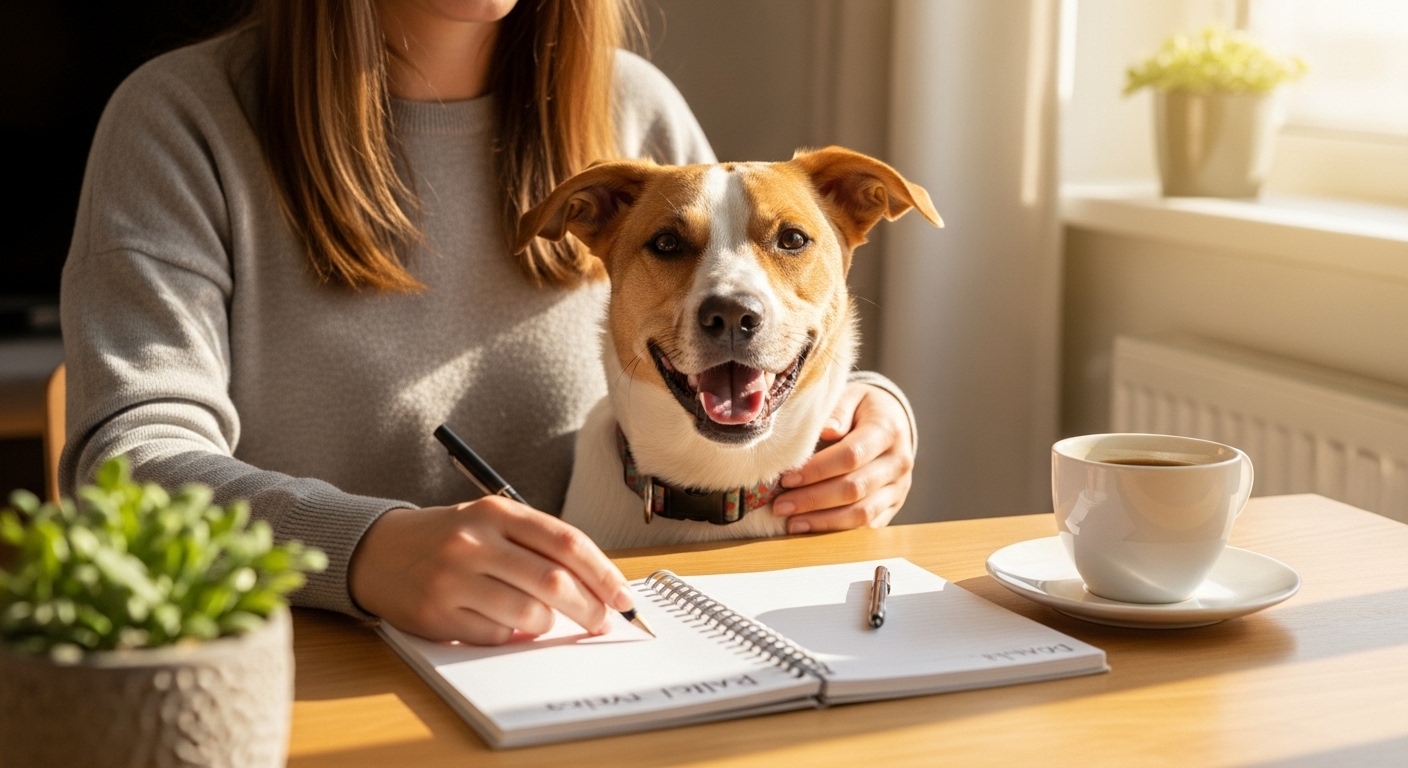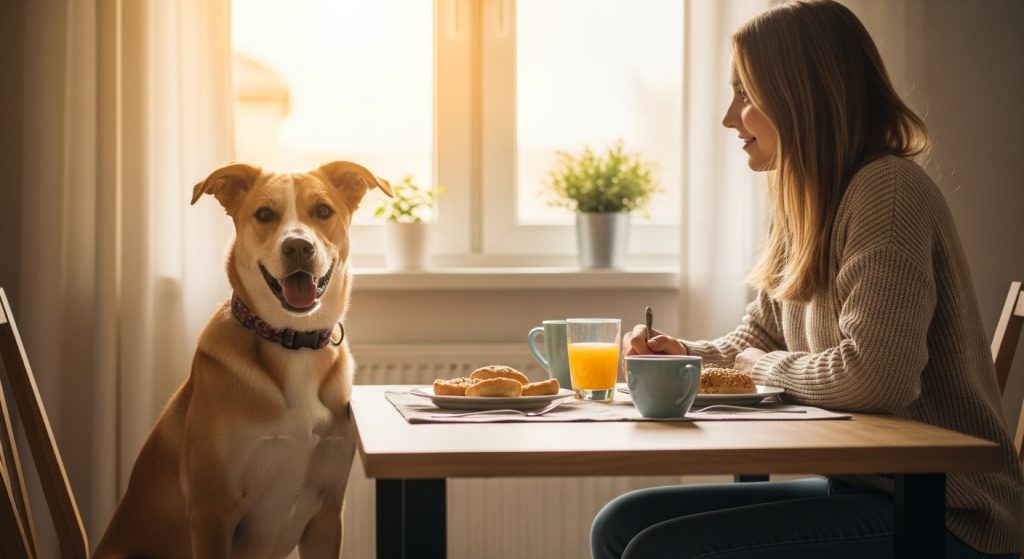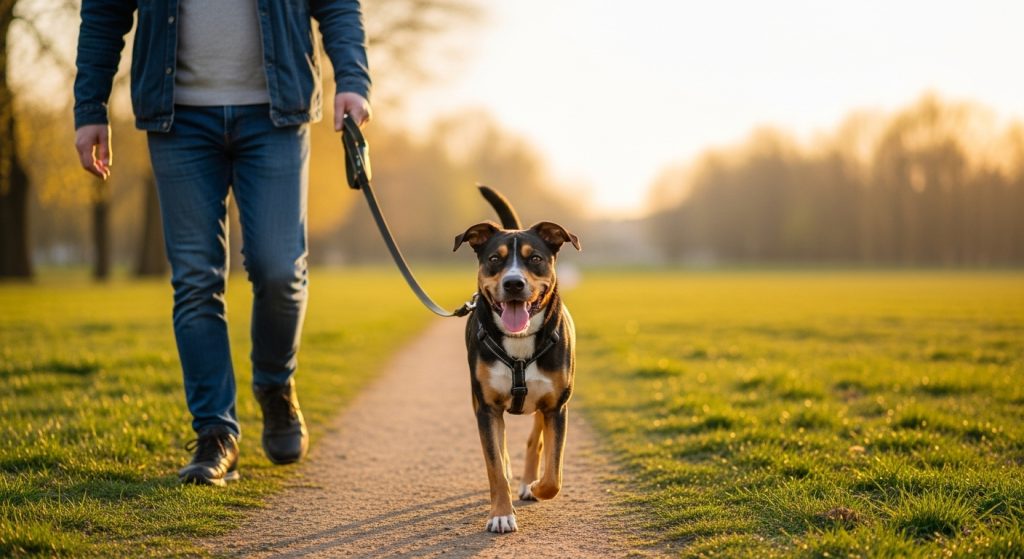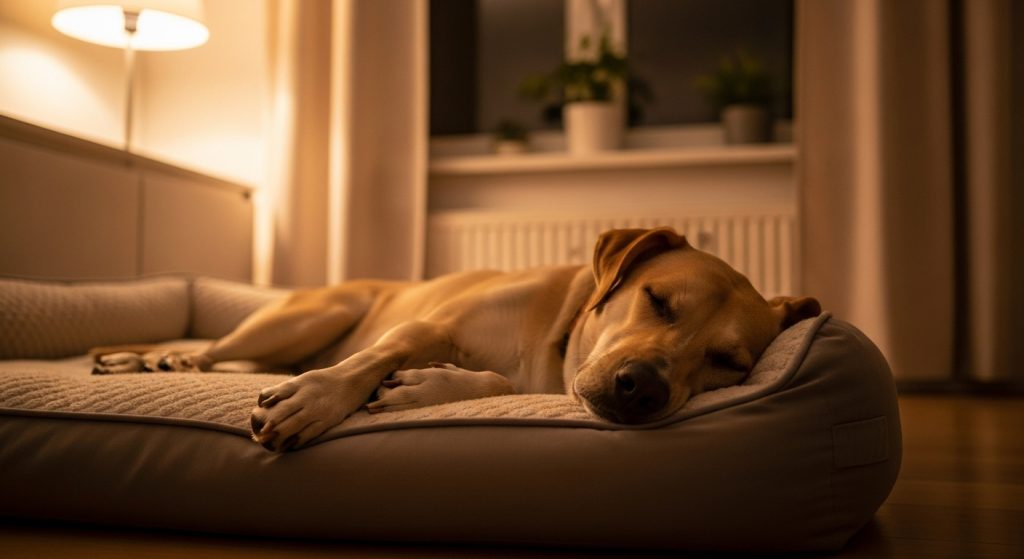Dogs thrive on structure, consistency, and love. A well-planned daily routine not only keeps your dog healthy but also strengthens the bond you share. Whether you have a playful puppy or a senior companion, building a balanced daily routine for your dog helps reduce anxiety, prevent behavioral issues, and create a harmonious home.
In this guide, we’ll break down how to design a perfect routine that fits both your lifestyle and your dog’s natural needs — from morning walks to bedtime cuddles.
Why a Consistent Daily Routine Matters for Dogs
Before creating a routine, it’s important to understand why dogs depend so much on structure. Like humans, dogs feel more relaxed and secure when they know what to expect each day.
1. Reduces Anxiety and Stress
Unpredictability can make dogs nervous. Regular feeding, walking, and playtime help them anticipate what’s coming next. This predictability lowers stress hormones like cortisol, keeping your dog calmer and more content.
Dogs that lack routine often show signs of stress such as pacing, whining, or destructive behavior. Establishing consistency helps eliminate those issues before they start.
2. Encourages Better Behavior
Routine gives dogs clear expectations. When your dog knows when to eat, walk, or rest, they’re less likely to beg, bark excessively, or act out.
Training becomes easier too — structure creates discipline and focus.
3. Promotes Physical Health
Regular activity and meal times help regulate digestion, weight, and energy levels. A predictable schedule ensures your dog gets the right balance of exercise and rest every day.
4. Builds a Stronger Human-Dog Bond
When your dog trusts that you’ll provide consistency, it deepens emotional connection. They see you as a reliable, confident leader — essential for mutual trust.
Designing the Ideal Daily Routine — Step-by-Step Guide
Creating the best daily routine for your dog depends on their age, breed, and energy level. However, the core elements — feeding, exercise, play, training, and rest — remain the same. Let’s design a typical day for a balanced, happy dog.
1. Morning Routine: Energy and Focus
Start the day with a short walk or potty break. Morning walks allow your dog to release overnight energy and stimulate their mind through sniffing and exploring.
Afterward, feed breakfast and offer fresh water.
Morning checklist:
-
15–30 minutes walk or light jog
-
Measured breakfast portion
-
10 minutes of calm training (sit, stay, recall)
Avoid intense play right after eating — give at least 30 minutes for digestion.
2. Midday Routine: Engagement and Exercise
If you work away from home, arrange a midday walk through a dog walker or family member. Dogs need at least one active session daily to maintain physical and mental health.
Activities for midday:
-
Fetch, tug-of-war, or park playtime
-
Puzzle toys or treat-dispensing feeders
-
Short training games to reinforce obedience
This keeps boredom away and reduces the risk of unwanted behaviors like chewing or barking.
3. Evening Routine: Calm and Connection
Evenings should focus on bonding and relaxation. Take a slower walk after dinner and allow sniffing exploration — it helps decompress the mind.
After returning home, offer quiet cuddle time or light brushing to wind down.
Evening checklist:
-
Dinner with consistent portion size
-
Relaxed walk or free time in the yard
-
Gentle affection, grooming, or chew toy time
4. Night Routine: Rest and Security
Before bedtime, let your dog out for a final potty break. Then guide them to their sleeping area — whether it’s a bed, crate, or cozy corner.
Keep lights dim and avoid loud noises so they associate nighttime with calm.
Maintaining and Adjusting Your Dog’s Routine Over Time
A daily schedule should adapt as your dog grows, ages, or experiences lifestyle changes. The key is maintaining balance, consistency, and awareness.
1. Adjust According to Age
-
Puppies: Need frequent potty breaks, short naps, and several small meals a day. Training sessions should be brief but frequent.
-
Adults: Benefit from structured exercise and mental stimulation. Two main meals and 1–2 long walks are ideal.
-
Seniors: Prefer gentle walks and longer rest periods. Keep feeding times consistent but watch calorie intake to prevent weight gain.
2. Balance Physical and Mental Stimulation
Over-exercising without mental challenges can tire your dog physically but leave them restless mentally.
Use enrichment games like hide-and-seek, scent tracking, or basic trick training to engage their brain.
3. Monitor Health and Behavior Changes
If your dog suddenly becomes lethargic, overeats, or refuses walks, it may be a sign to modify their schedule or visit a vet.
Routine observation is the best way to catch early signs of stress or illness.
4. Don’t Forget Socialization and Rest
Healthy routines include social time with other dogs or people. Regular exposure keeps your dog confident and friendly.
At the same time, prioritize rest. Dogs need 12–16 hours of sleep daily, depending on age and activity level.
5. Keep It Fun and Flexible
Consistency is vital, but monotony can be dull. Switch up walking routes or introduce new toys to keep life interesting without disrupting your dog’s rhythm.
A Happier, Healthier Dog Through Routine
A well-structured daily routine for your dog builds trust, happiness, and emotional stability. It doesn’t need to be rigid — it just needs to be consistent.
By balancing exercise, feeding, training, and rest, you’ll create an environment where your dog feels safe, loved, and fulfilled every single day.
Remember, your dog looks to you for guidance and security. A thoughtful routine isn’t just about timing — it’s about connection, communication, and care.
So start today: set the rhythm, stay consistent, and watch your dog thrive in both body and mind.




